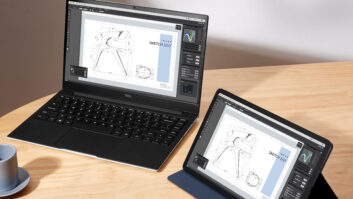Smartphone are starting to break out of a listless cycle of incremental improvements that have dragged down growth rates into the low single digits.
In recent days, Motorola joined the short list of companies launching or planning to launch smartphones that can be upgraded and customized via optional modules. The company’s Z-series phones will join LG’s recently launched modular G5 phone and Google’s planned Project Ara phone, which is scheduled for a 2017 launch.
For its part, Lenovo announced September availability of the world’s first smartphone equipped with Google’s Tango technology, whose position-tracking, depth-sensing and augmented-realty (AR) capabilities will enable app developers to create indoor-navigation apps for use inside shopping centers and other buildings where GPS coverage is unavailable. The technology’s AR capabilities will let consumers see how furnishings, flooring, appliances, and other products will look and fit in their homes by overlaying the items on a real-world view of a room as seen by the phone’s main camera.
Lenovo also pointed to the smartphone future by unveiling a bendable concept phone that wraps around the wrist like a smart watch.
Products such as Motorola’s Moto Mods modules will break a cycle of “limited choice, similar products and bored consumers,” Motorola promised.
“From the mid-1990s to the mid-2000s, there was meaningful and frequent innovation in wireless,” Motorola said. “But, since then, innovation has stagnated and is often incremental at best.”
Modular smartphones mark the “start of a trend of OEMs trying to out-innovate one another,” said Wayne Lam, IHS Technology’s principal telecom analyst. The smartphone market is approaching the 10th anniversary of the introduction of the original iPhone, and “everyone senses that there’s a new technological disruption coming up soon, and are all racing to be the one to disrupt the market,” he said.
Modular smartphones, however, are more about LG and Motorola “looking to reinvigorate their smartphone business” by offering differentiated products and less about igniting industrywide growth, he said.
Modularity will also help Motorola and LG boost their profitability, he said. “Since very few smartphone OEMs are making profit on their smartphone operations, the modules and subsequent hardware expansion ecosystem provide a source of profitability for players like LG and Motorola, if their hardware ecosystem is successful,” he said.
LG’s modular strategy differs significantly from the Motorola and Project Ara strategies, Lam also pointed out. “Project Ara and Moto Z share a common ‘hot swappable’ design concept. This modularity is distinct from the LG G5, whereby the modularity comes after the phone has been powered down.”
Google’s project Ara is more ambitious, with the base phone offering six module slots, Lam continued, “but the impact to the mass-market smartphone market will be limited as it creates an added layer of cost for consumers to have to invest in these modules.”
Instead, he said, “the future of smartphones — and tablets and wearables for that matter — will be in the bendable and foldable display concepts that Lenovo showed off” at a recent event. Bendable designs “have the potential to blur the lines between smart watches, smartphones and tablets,” Lam contended.
For his part, ABI research director Jeff Orr sees suppliers turning to modularity to boost revenues in a flattening smartphone market. “As the ASPs of smartphones continue to encounter downward pressure, OEMs are looking for a way to not only create additional revenue sources after the initial device sale [but also] to grow affinity for their brand.”
Like mobile apps that create stickiness with a smartphone OS, Orr explained, “the sale of smartphone modules allows for higher customization and personalization of a device while keeping the user locked in to a base hardware platform.”
For the concept to work for suppliers, however, the base smartphone has to be appealing on its own, and the selection of modules must “create a tipping point to convert interest in modular handsets to an early installed base that can be marketed to,” Orr continued.













